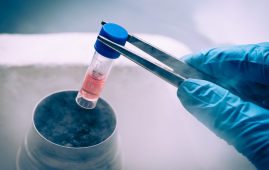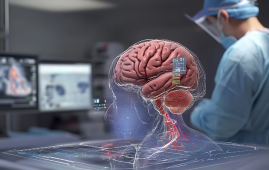

A new assessment tool provides practical guidelines for detecting hikikimori, a severe form of social isolation.
The diagnostic evaluation tool was published online in World Psychiatry on September 15th, along with a letter from the co-authors. The tool is the first formal technique for evaluating persons who have a disorder that was first identified in young people in Japan but is now thought to affect people of all ages worldwide.
The Hikikomori Diagnostic Evaluation, or HiDE, is a tool that offers clinicians with practical instructions and precise structured interview questions to help them identify the disease.
“Providers and patients who have heard about hikikomori are still often in the dark in terms of knowing what exactly it is, or how they might get clinically evaluated for it,” said lead author Alan Teo, M.D., associate professor of psychiatry in the School of Medicine at Oregon Health & Science University, and a psychiatrist in the VA Portland Health Care System. “Family members have looked for therapists and psychiatrists who can help, and they hit dead ends.”
Hikikimori is characterised by the stress generated by months of home isolation.
The new assessment technique provides a road map for clinicians to differentiate hikikimori from other types of mental disease such as generalized anxiety disorder.
Teo and co-authors provided a streamlined and clear diagnosis of hikikomori in World Psychiatry in early 2020. The ink on that publication had just dry when the COVID-19 epidemic caused much of the world to work from home and avoid big public gatherings, causing significant social isolation for some and exacerbating it for others.
“When COVID hit, people began spending more time alone, going into their own caves,” Teo said. “That affected the way we live our lives. In addition, technology encourages us to look at our screens and not necessarily look each other in the eye. I have to think all of these factors are nudging more people in the direction of risk for hikikomori.”
Following an accurate diagnosis, clinical counseling will be provided to address the disease.
“We don’t know what treatments work, and what treatments don’t work,” Teo said. “We’re focused on doing things one step at a time. You can’t treat something if you can’t agree on what it is, and if you can’t diagnose it in the first place.”
more recommended stories
 E-Cigarette Use and Heart Attack Risk in Former Smokers
E-Cigarette Use and Heart Attack Risk in Former SmokersKey Takeaways for Clinicians and Nurses.
 36-Week Pre-eclampsia Screening May Reduce Term Risk
36-Week Pre-eclampsia Screening May Reduce Term RiskA New Preventive Strategy for Term.
 Cardiovascular Risk and Sudden Cardiac Death in Diabetes
Cardiovascular Risk and Sudden Cardiac Death in DiabetesRising Sudden Cardiac Death (SCD) Risk.
 Poor Kidney Function and Alzheimer’s Biomarkers Explained
Poor Kidney Function and Alzheimer’s Biomarkers ExplainedPoor kidney function may influence levels.
 Walking Speed Before Hip Replacement Predicts Recovery
Walking Speed Before Hip Replacement Predicts RecoveryNew Evidence Points to a Simple,.
 Neuroblastoma Drug Combo Extends Survival in Models
Neuroblastoma Drug Combo Extends Survival in ModelsA Promising Shift in High-Risk Neuroblastoma.
 Safer Allogeneic Stem Cell Transplants with Treg Therapy
Safer Allogeneic Stem Cell Transplants with Treg TherapyA new preclinical study from the.
 How Soybean Oil Impacts Weight Gain and Metabolism
How Soybean Oil Impacts Weight Gain and MetabolismWhy Soybean Oil May Affect Metabolism.
 Coffee and Cognitive Function: Evidence Review
Coffee and Cognitive Function: Evidence ReviewA new narrative review in Cureus.
 AI in Emergency Medicine and Clinician Decision Accuracy
AI in Emergency Medicine and Clinician Decision AccuracyEmergency teams rely on rapid, accurate.

Leave a Comment